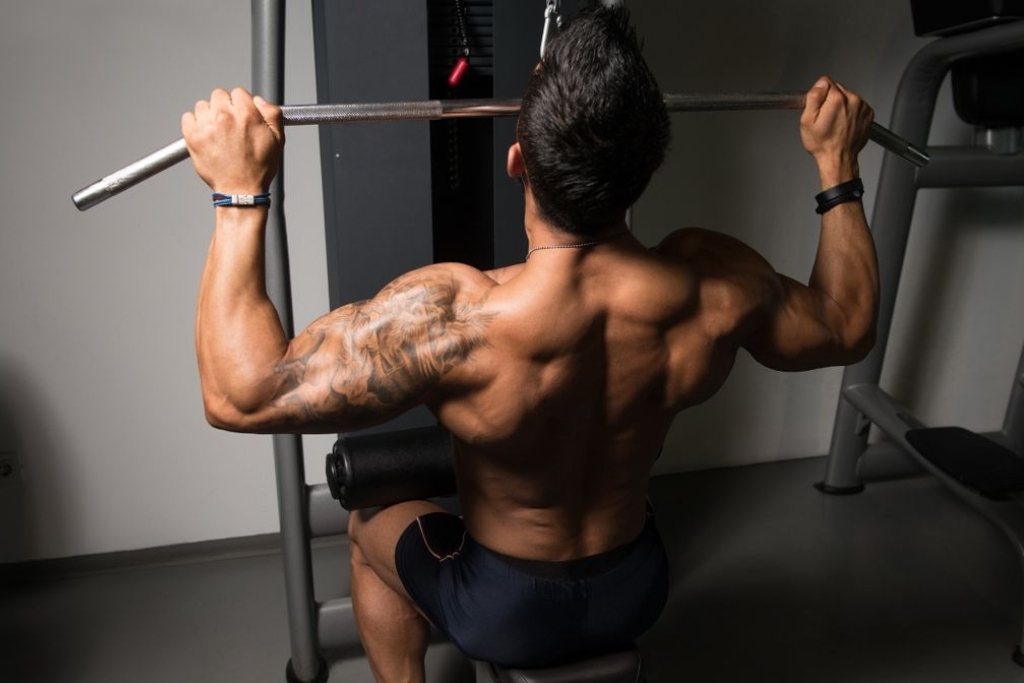
The v taper workout
The V-taper is the shape that sticks out the most when you think of a powerful, athletic physique. It’s the traditional shape of a “V” that starts at your shoulders and back and narrows down to a slim, defined waist. You may see it in athletes, fitness models, and experienced lifters. It’s a form that quickly shows balance, discipline, and strength.
It’s not just about looks with the V-taper. It shows that you are functionally fit and balanced, which means that your exercises aren’t only about doing biceps and crunches in front of a mirror. It shows that you’ve built your back and shoulders as much as your chest and that your training plan considers performance as much as aesthetics.
What the V-Taper Really Means
A true V-taper means your upper body is proportioned like an inverted triangle, with broad shoulders, a wide back, and a narrow waistline. The ideal ratio often mentioned by trainers is a shoulder circumference roughly 1.6 times your waist. This “golden ratio” isn’t just for looks; it’s seen across art, architecture, and even nature.
In fitness, this ratio signals balance. It means your posterior chain; the line of muscles running from your traps down to your calves, is strong and developed. Those muscles do more than simply help you lift more weight or run faster. They also help keep your shoulders stable, preserve your spine, and make your posture better. In other words, training for the V-taper helps with both form and function by combining strength training with keeping your joints healthy for a long time.
The Muscles That Give It Shape
You need to work on your lats (the muscles that stick out from your back), your deltoids (particularly the rear delts), and the minor supporting muscles, such the traps, rhomboids, and obliques, to get the V-taper. Building these areas will widen your upper frame while tightening your midsection naturally.
Your lats are responsible for most of that “winged” shape, and your rear delts complete the illusion by adding width across the shoulders. Training these muscles also improves posture, helps prevent back pain, and protects your shoulder joints. A well-developed back doesn’t just make shirts fit better; it makes daily movements, from lifting groceries to sitting at your desk, feel easier and safer.

The resistance training
Building Your V-Taper the Right Way
It’s easy to assume that wide-grip pull-ups and pull-downs are the best path to a broader back, but that’s not entirely true. Going too wide limits the range of motion and reduces how much your lats can actually stretch and contract. Instead, focus on full range and controlled movements that properly engage your muscles.
A well-rounded plan should combine resistance work, mobility, and recovery routines to let the muscles grow and adapt. You can even add micro-sessions for desk workers, short bursts of movement throughout the day—to improve blood flow and posture between workouts.
Here’s a sample training approach inspired by expert recommendations:
- V-Taper Row Series: Use dumbbells and a bench. Alternate between two flared rows (elbows out) to target rear delts and one standard row (elbows close) for the lats. Perform 3–4 sets of small clusters, focusing on control and contraction.
- Eccentric Push Press: Stand tall with dumbbells at shoulder level. Dip slightly, then drive the weights overhead and lower them slowly for a three-count. This builds shoulder stability and power.
- Wide-Grip Bent-Over Rows: Keep your torso hinged and row the weights with elbows high. This helps shape your upper back while maintaining tension through your core.
- Hollow Hold Dumbbell Pullover: Lie on your back with a single dumbbell. Hold a hollow-body position and move the weight slowly behind your head to engage your core and lats together.
These movements can be rotated into a hybrid workout plan that includes both pulling and pressing actions. Combining this with quick 15-minute resistance training for better sleep and mood or adaptive yoga for seniors (if you’re easing into mobility work) can help sustain balance and recovery.
The Recovery You Shouldn’t Ignore
A V-taper isn’t built in one intense session; it’s developed through consistency, rest, and proper care. Incorporate sauna and cold plunge for recovery or yoga for mental health to manage stress and improve circulation. When your nervous system is calmer, your body performs better in every lift.
Long-hour workers or people with bad posture can benefit from AI posture correction for home yoga because it helps build stronger, more stable muscles and stops errors that slow down growth. To fit with the idea of holistic fitness, where strength, mobility, and mental focus all work together, these tools make modern exercise easier to start.
Why the V-Taper Is More Than Just a Look
Chasing the V-taper isn’t about ego. It’s about training your body to move efficiently, look balanced, and feel strong. A wide back and tight waist make you look confident, yes, but they also protect your joints, enhance athletic power, and prevent pain. It’s the ultimate example of a fitness goal that looks good because it’s built on smart, sustainable effort.
When you start thinking of your workouts as more than muscle-building — when you connect them to posture, longevity, and energy — your fitness becomes a form of self-care. The V-taper, then, isn’t just a shape; it’s a symbol of balance, discipline, and health working in harmony.








